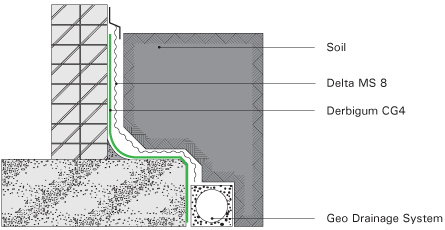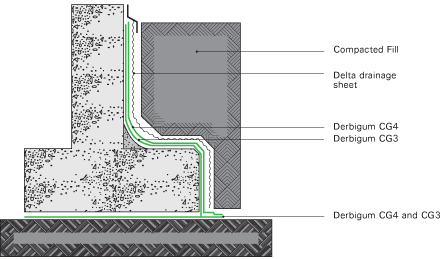Structures that are built below ground level, such as basements, cellars and retaining walls, are very susceptible to waterproofing problems.
It is essential that the correct design and construction techniques are applied to avoid costly repairs down the road.
Ideally, we favour applying positive waterproofing systems, i.e. the waterproofing products are applied to the outside of the structure which gets into contact with moisture.
This ensures that no water enters the structure.
It is normally relatively easy to apply positive waterproofing to a new construction, but can be a bit more complicated on existing buildings.
Where possible and economically viable, we will excavate and apply the waterproofing to the outside surface.
In some cases, it is not possible to access the external surface of an underground wall, e.g. a retaining wall built below a building on a slope.
In these cases, a waterproofing system is applied to the inside surface of the building (negative waterproofing).
While generally this is not as effecive as positive waterproofing, it can still provide a durable and cost effective solution.
We have had much success in applying both positive and negative waterproofing systems.
Our specialists will examine your property and ensure that a suitable solution is achieved.
Signs of a waterproofing problem in a basement, cellar or retaining wall:
- Blistering paint
- Excessive mould
- Musty odour
- Rotten skirting boards
- Leaking through floor-slab
- Loose tiles
Specification: Retaining Walls

Specification: Basements, Cellars and Underground Tanking
